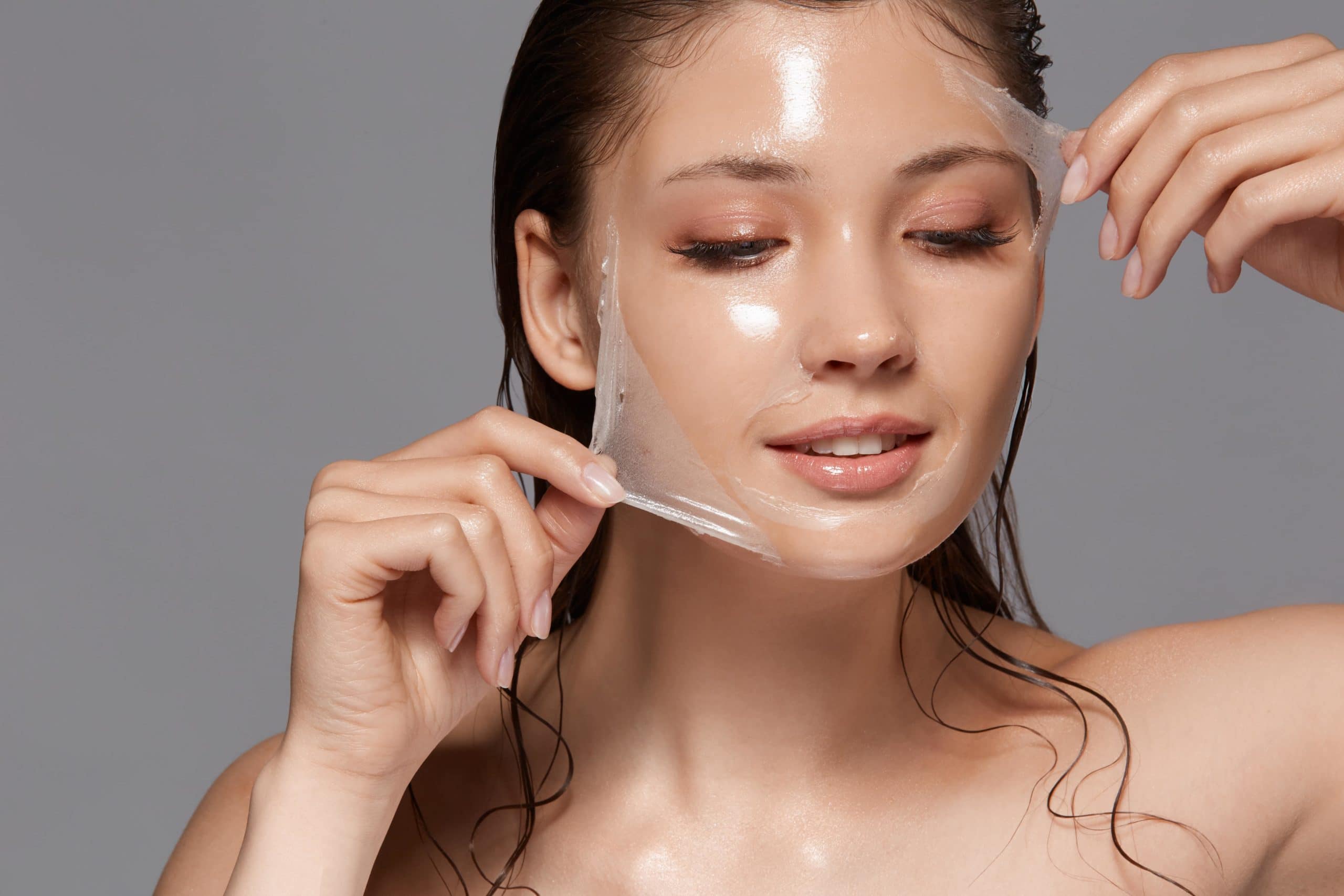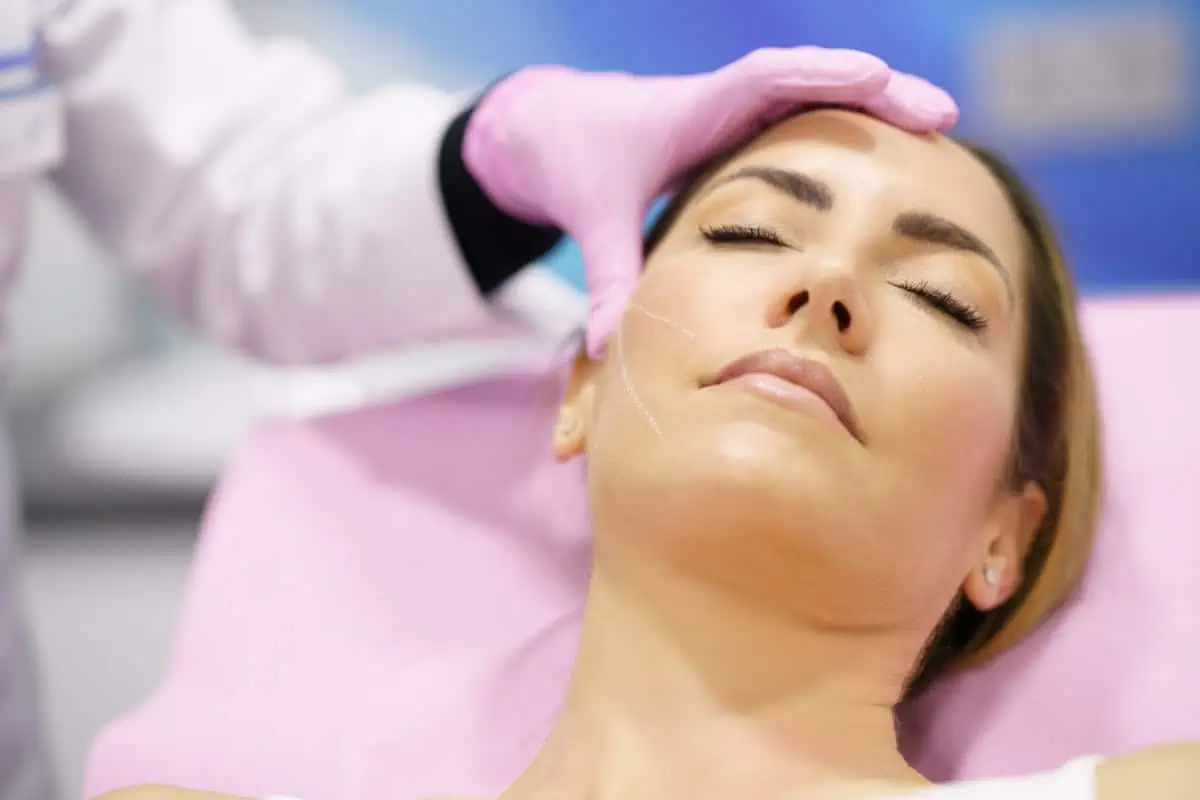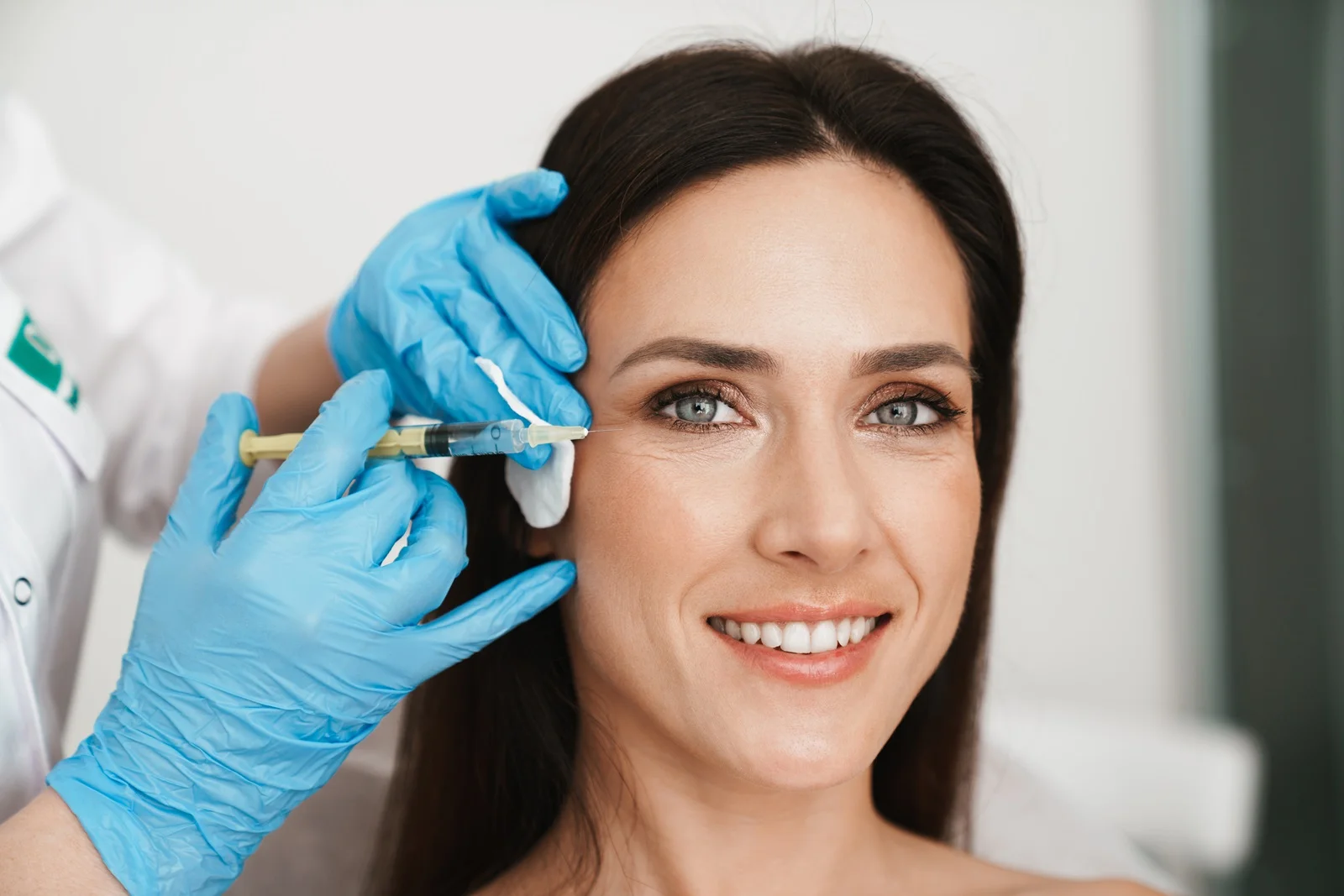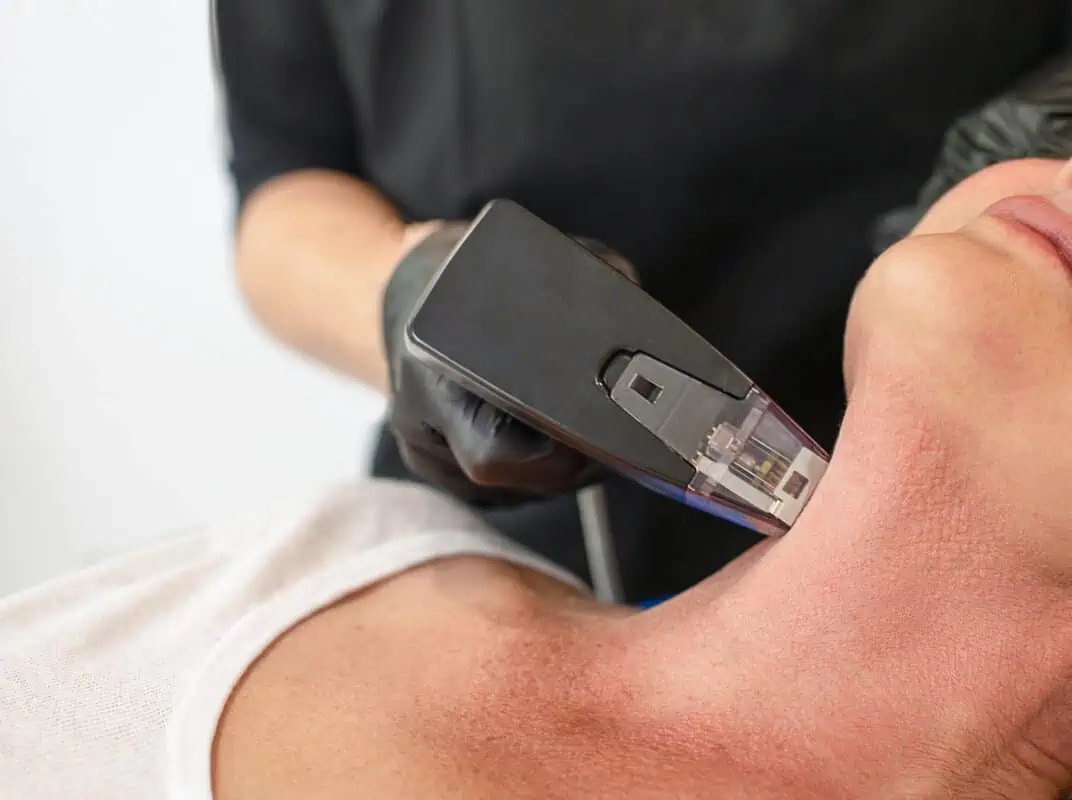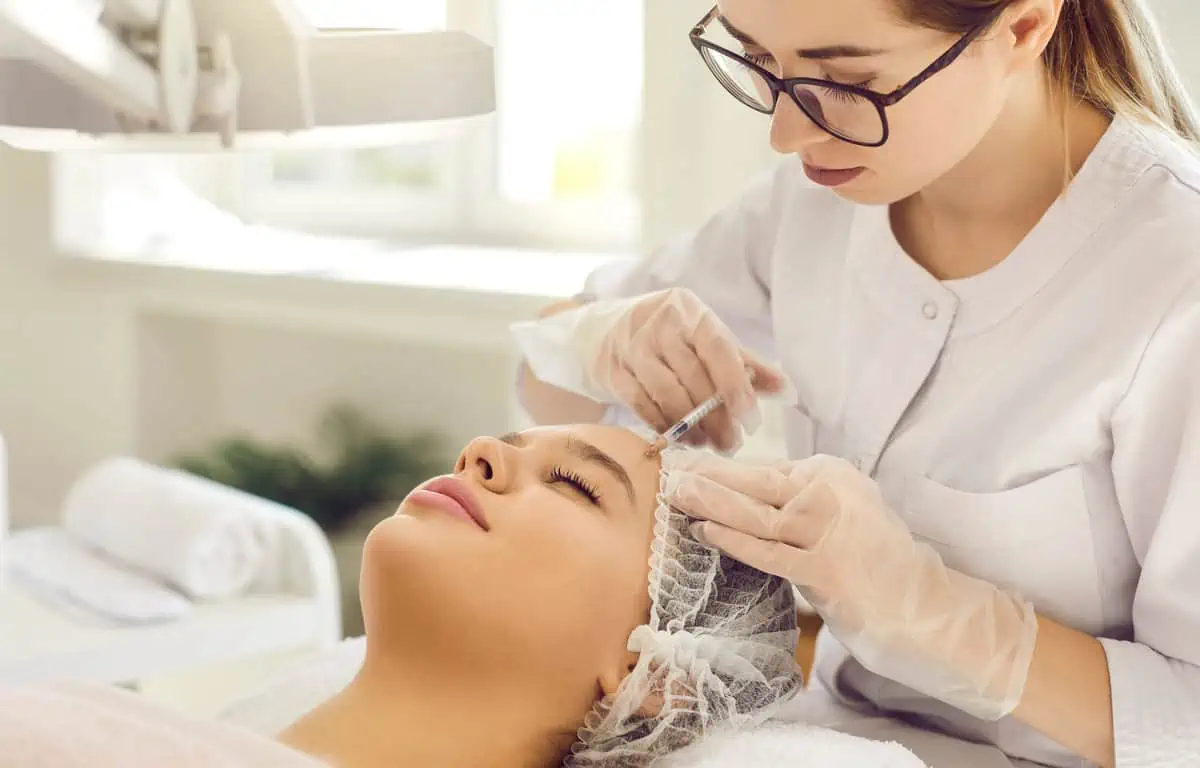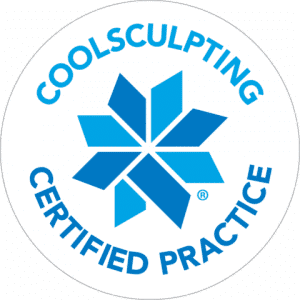Introduction
Chemical peels are a popular cosmetic treatment that can help improve skin texture, reduce the appearance of fine lines and wrinkles, and minimize hyperpigmentation. After undergoing a chemical peel, properly handling your skin is important to ensure a successful recovery and optimal results.
This article will discuss how to protect your face after a chemical peel. We’ll cover what to expect during recovery, how to care for your skin, and common mistakes to avoid. Following these tips can help your skin heal and achieve a beautiful, healthy glow.
What to Expect After a Chemical Peel
When you undergo a chemical peel, your skin will experience a controlled injury, causing the top layers of the skin to peel away. This process can cause redness, swelling, and discomfort. The extent of these side effects will depend on the peel you have received, your skin type, and the depth of the peel.
Immediate Effects
After your chemical peel, you may experience the following:
- Redness and inflammation
- Swelling
- Tingling or burning sensations
- Peeling or flaking skin
- Dryness and tightness
These effects will vary depending on the chemical peel you receive, lasting anywhere from a few days to a few weeks.
The Healing Process
Your skin will begin to heal itself immediately after the chemical peel. It will scab over and then peel away, revealing new, healthy skin underneath. You should avoid picking at your skin during this process, which can cause scarring or discoloration.
Duration of Recovery
The recovery duration will depend on the type of chemical peel you received, the depth of the peel, and your skin’s healing process. In general, you can expect to see initial results within a few days to a week after treatment, but it can take up to four weeks for the skin to fully heal and reveal its new, refreshed appearance.
How to Protect Your Face After a Chemical Peel
After a chemical peel, your skin will be more vulnerable to damage and irritation. It’s important to protect your skin and support its healing process. Here are some tips for protecting your face after a chemical peel:
Avoiding Direct Sunlight
Direct sunlight can further irritate your skin and increase the risk of hyperpigmentation. Avoid sun exposure as much as possible, especially during peak hours (10 a.m. to 2 p.m.). Wear a wide-brimmed hat and stay in the shade if you must be outside.
Wearing Protective Clothing
Wearing protective clothing is an effective way to prevent skin damage and irritation after a chemical peel. When your skin is exposed to the sun or other environmental stressors, it can lead to further irritation and slow down the healing process. To protect your skin, it is recommended to wear clothing that covers your skin, such as long-sleeved shirts and pants. Clothing made of tightly woven fabrics such as cotton, linen, or nylon can effectively block the sun’s harmful rays. Additionally, wearing dark-colored clothing can help to absorb more of the sun’s rays, which reduces the amount of UV radiation that reaches your skin. Clothing should not be too tight or restrictive, as this can irritate the skin. Loose-fitting clothing made of breathable materials like cotton or linen can help to prevent irritation and allow your skin to breathe.
Using a Broad-Spectrum Sunscreen
A broad-spectrum sunscreen is essential for protecting your skin after a chemical peel. A chemical peel can make your skin more sensitive to the sun’s harmful UV rays, which can cause further damage and slow down the healing process. Applying a broad-spectrum sunscreen with an SPF of 30 or higher protects your skin from UVA and UVB rays.
UVA rays can penetrate deep into the skin and cause long-term damage, such as premature aging and an increased risk of skin cancer. On the other hand, UVB rays can cause immediate damage, such as sunburn. A broad-spectrum sunscreen protects your skin from both types of rays, reducing your risk of sun damage and skin cancer.
When choosing a sunscreen, look for one that is non-comedogenic, meaning it won’t clog pores and doesn’t contain irritants like alcohol or fragrances. This can help prevent further skin irritation after a chemical peel. Sunscreens that are specifically designed for sensitive skin are often a good choice. Also, apply sunscreen daily, even if you’re not going outside. UV rays can still penetrate through windows and other forms of indoor lighting. Apply sunscreen at least 20 minutes before going outside, and reapply every two hours or more frequently if you’re swimming or sweating.
Applying Moisturizer and Hydrating Products
After a chemical peel, your skin will dry and feel tight. Apply a moisturizer several times daily to help soothe and hydrate your skin. Look for a moisturizer that is gentle and doesn’t contain harsh ingredients.
Avoiding Harsh Products and Exfoliation
Avoid using harsh products on your skin, such as scrubs or exfoliants, until your skin has fully healed. These products can further irritate your skin and slow down the healing process.
Practicing Proper Hygiene
Keep your skin clean and avoid touching your face as much as possible. Use gentle cleansers and avoid hot water, which can further irritate your skin. Pat your skin dry with a soft towel and avoid rubbing or pulling on the skin.
Staying Hydrated
Drinking plenty of water is important for maintaining healthy skin. After a chemical peel, staying hydrated is even more important to support the healing process. Drink at least 8 glasses of water daily to keep your skin hydrated and promote healing. You can also incorporate hydrating foods like watermelon, cucumbers, and oranges into your diet.
Consider using a humidifier in your home. The dry air in your home can further dehydrate your skin, so using a humidifier can help maintain the moisture levels in your environment and keep your skin hydrated.
Seeking Professional Advice
If you experience any unusual or severe symptoms after a chemical peel, it’s important to seek professional advice. Here are some signs that you may need to seek medical attention:
- Excessive redness, swelling, or pain
- Development of blisters or lesions
- Signs of infection, such as fever or pus
- Worsening of skin discoloration or scarring
- Allergic reactions, such as hives or difficulty breathing
Conclusion
In conclusion, taking care of your skin after a chemical peel is crucial for promoting healing and maintaining healthy, radiant skin. Following the tips outlined in this article can protect your skin from further damage and support its recovery process.
At SeaMist MedSpa, we offer a variety of skin care treatments, including chemical peels, to help you achieve your skincare goals. Our team of experienced skin care professionals can guide you through the post-treatment process and provide personalized recommendations to help you maintain your skin’s health and appearance.
Book a consultation with us today!

